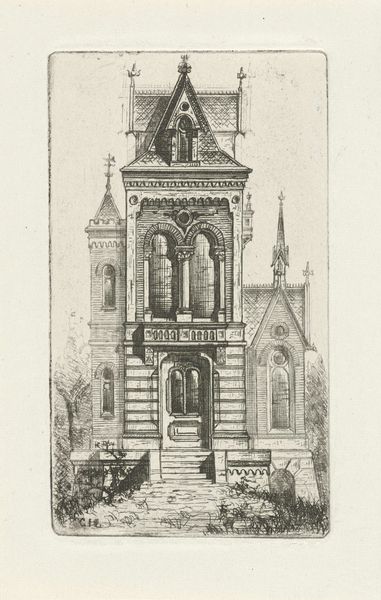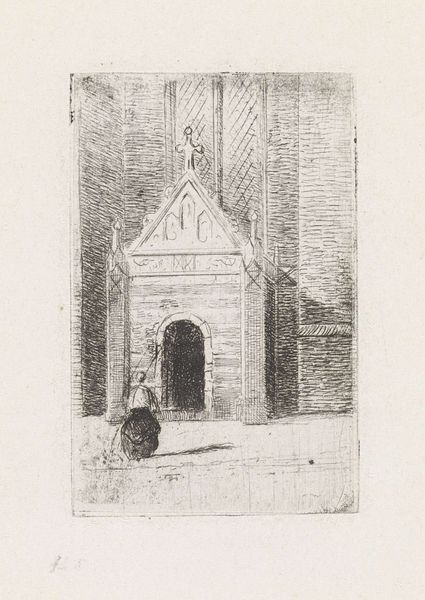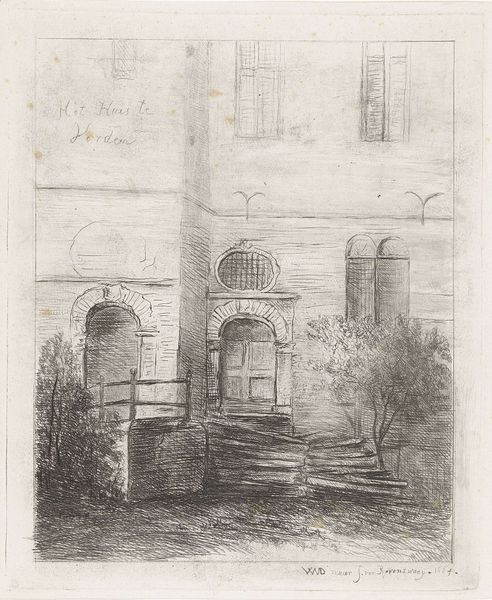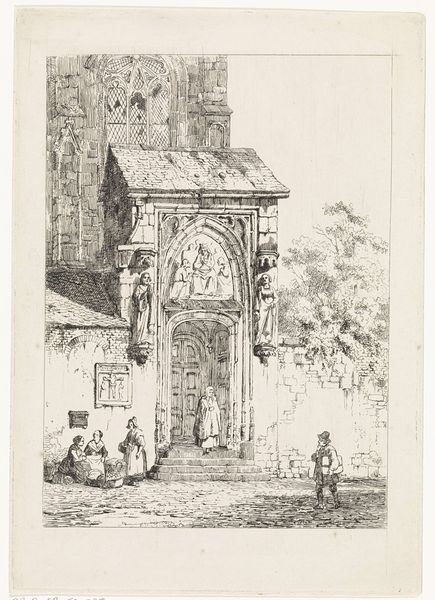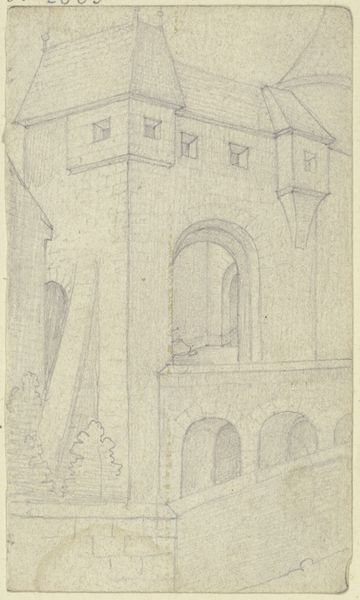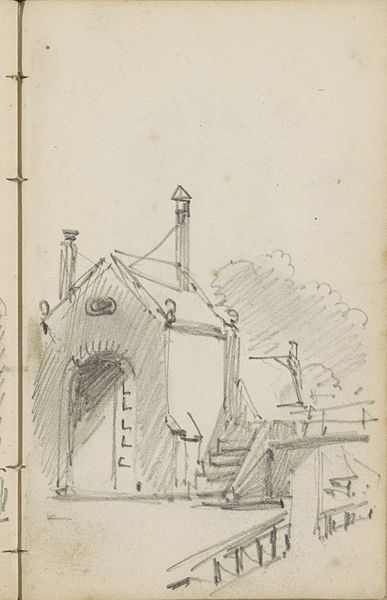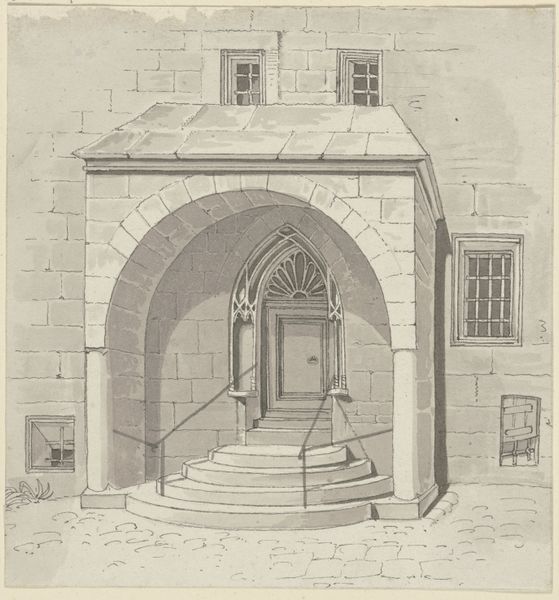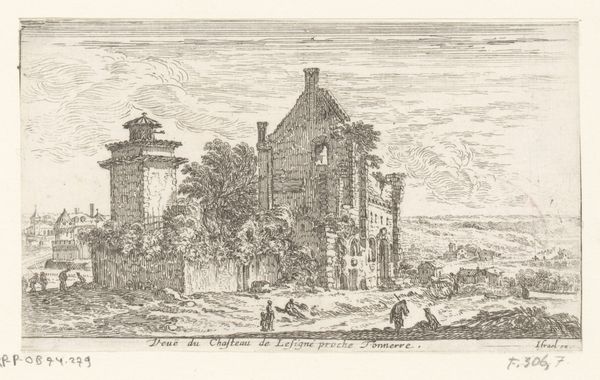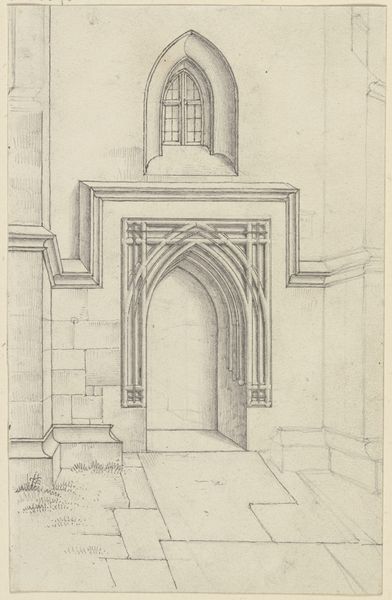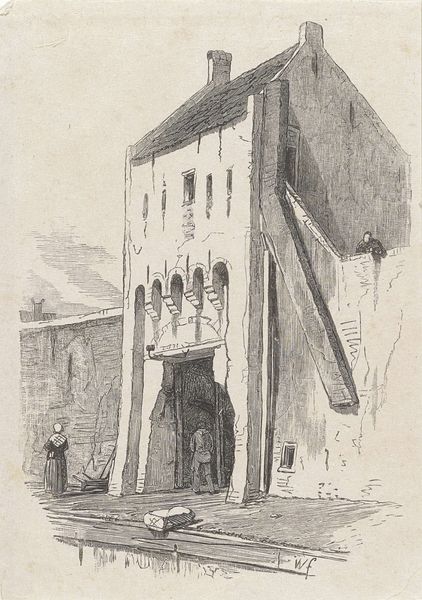
Dimensions: height 152 mm, width 97 mm
Copyright: Rijks Museum: Open Domain
Editor: This etching, "Figuur bij een kerkpoort," or "Figure at a Church Door" by Jan Diederikus Kruseman, created in 1853, has a certain stillness about it. The figure almost blends into the stonework. What stands out to you when you look at it? Curator: What I see is a confluence of power structures. We have the church, rendered almost ghostlike in the background, looming large. And then, a figure, perhaps a nun, positioned outside a smaller structure, seemingly in contemplation. Where do you think she fits in this hierarchy? Is she inside, outside, or resisting the bounds of the church as an institution? Editor: I hadn't really considered it in that way. The figure seems so passive. But you’re right, the composition places the church in a position of dominance. Perhaps the figure's positioning represents the negotiation of faith within restrictive social norms of the time? Curator: Exactly. Consider the historical context. Mid-19th century Europe was marked by rigid social structures and expectations, particularly for women. How might this etching be a quiet commentary on women's roles within religious institutions, or society more broadly? And even Kruseman himself – was he challenging these norms by simply bringing this image into being? Editor: That's such an interesting point. It pushes me to reconsider the piece. I initially read it as a simple genre scene, but it’s far more complex. Now I see the figure as perhaps subtly challenging, or maybe questioning, her place in the world, rather than passively accepting it. Curator: Art provides us the chance to decode subtle statements through visual storytelling, challenging power and gender norms and starting discussion on these delicate yet crucial issues. Editor: I'll definitely look at art differently now. Thanks for opening my eyes to its historical and cultural potential.
Comments
No comments
Be the first to comment and join the conversation on the ultimate creative platform.
